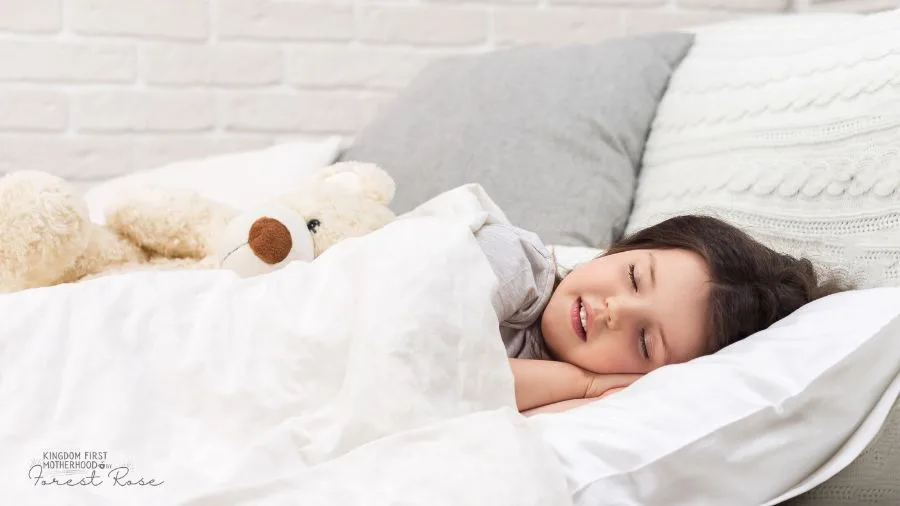Children with attention deficit hyperactivity disorder (ADHD) often face additional challenges when it comes to sleep. From trouble falling asleep and staying asleep to daytime fatigue and abnormal circadian rhythms, the lack of rest can make ADHD symptoms even more noticeable. That’s why weighted blankets can be a helpful solution, offering comfort that promotes better sleep. When your child doesn’t get enough rest, it’s essential to find ways to support them so their ADHD symptoms don’t become more prominent.
Weighted blankets can be a real game-changer for children with ADHD who have trouble sleeping, helping them improve both the quality and duration of their rest. After looking into it, I’ve learned how weighted blankets can offer comfort and help kids with ADHD feel more focused and rested. If your child has been struggling with these challenges, here’s what you need to know about how weighted blankets might make a difference.

Contents
What are Weighted Blankets?
A weighted blanket contains weighted balls, beads, pellets, or other heavy materials. The blanket can weigh anywhere from about five pounds and up to thirty pounds.
These blankets work by applying consistent but gentle pressure across the body. Many people equivocate the feeling of being hugged or cuddled, much like a swaddle to a baby. Some pair blankets with weighted pillows to help provide the most effective weighted experience.
Deep Pressure Therapy
The pressure from weighted blankets is associated with deep pressure therapy (DPT) or deep pressure stimulation, where the weight helps to activate the parasympathetic nervous system to relax and calm the body. It can also help with other ailments, such as anxiety or stress, along with sensory sensitivity.
Reducing anxiety and stress goes a long way for kids with ADHD, and the calming effect is significant for providing them the ability to fall asleep more quickly and stay asleep longer. Studies have shown that weighted blankets increase sleep duration for children with ADHD.
Weighted Blankets and ADHD
A weighted blanket can be beneficial for children with ADHD as an effective way to help provide:
Focus: A weighted blanket helps to bring attention to your surroundings and relax the body in that moment. Children with ADHD tend to have trouble managing emotions or dealing with heavy stress and anxiety. It can be tough to wind down after a challenging or overwhelming day. Still, with the pressure from the blanket, they can relax, more effectively organize thoughts, and allow worries to cease.
Reduces Anger: Some therapists use weighted blankets for anger issues, as outbursts can be a symptom of ADHD and other neurodevelopmental disorders. The gentle but consistent pressure can stop children from having those angry outbursts.
Improves Sleep: Overall, getting your child to sleep will be much easier with a weighted blanket since it significantly reduces sleep problems in children with ADHD. The weight helps to keep children from moving around too much which can disrupt sleep cycles, and helps to improve the quality of rest.
Weighted blankets have a calming effect on adults and children alike. Researchers then took steps to understand the therapeutic potential of this simple, non-medication intervention to improve the sleep of children with ADHD.
How to Choose a Weighted Blanket
Weighted blankets are sold in various stores, so finding the right one for your child might be a bit overwhelming. Here are some things I have discovered when searching for one.
Price
Price is most definitely a factor, and they can get pretty expensive. The price depends on many factors, including the quality, materials, weight, and size of the blanket. Average weighted blankets cost anywhere from $100 to upwards of $500, so it might be helpful to go to in-person stores and try some out before purchasing. You may also want to include a weighted pillow with the blanket, such as this weighted calming pillow.
Weight
You may want your child to see which weight feels more comfortable since too much weight can have the opposite effect of helping them sleep. However, some children with ADHD may want a heavier blanket, so it’s necessary to determine what weight will be preferred. You want it to provide the pressure but still be able to move underneath it without a lot of trouble.
Material
Children with ADHD may be more apt to choose a specific blanket fabric or material, so keep this in mind when conducting your search. Cotton is lighter than linen, for example. You can probably find blankets with certain materials if your child prefers a more fuzzy, softer, or velvety feel to their blanket.
Risks
There are always some risks involved, mainly for younger children. For example, pellets or beads that can get loose can be a choking hazard around very young kids. It might be beneficial to consistently check the seams on the blanket to ensure they stay tight and secure.
It’s always an excellent idea to talk to your child’s doctor, therapist, or other healthcare professional before investing in a weighted blanket. They might be able to provide some suggestions for choosing a good weight and material or may even direct you to a specific brand that works well for children with ADHD.
The most important thing is to remember that a weighted blanket is not going to be a cure-all for your child with ADHD. It can, however, be a beneficial tool in managing many symptoms, including insomnia or sleep deprivation, so your child can get more adequate rest.
For more homeschooling inspiration, tips and encouragement, make sure to follow KFH on Facebook, Pinterest, Instagram and Twitter, and subscribe to our Newsletter for some FREE GOODIES!
Forest Rose is a God Loving, Blessed Wife, & Mama to 3 girls. She’s passionate about lifting moms out of the trenches that are discouraged, overwhelmed, or feeling alone or isolated. Her hope is to point them to Christ and equip them to rise up with a newfound hope and joy within, that He alone can provide. Besides blogging, she also loves to create printables!




Leave a Reply